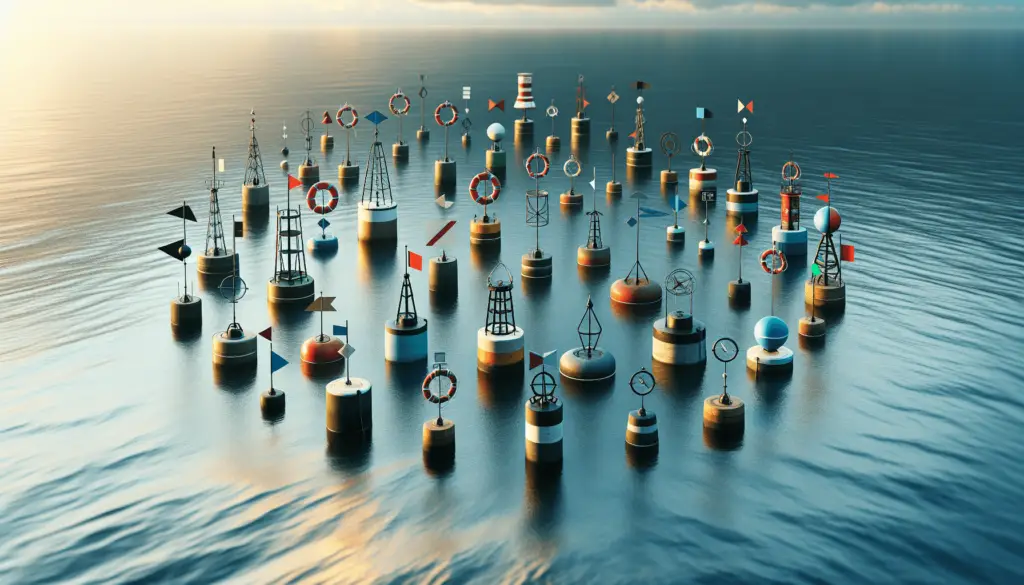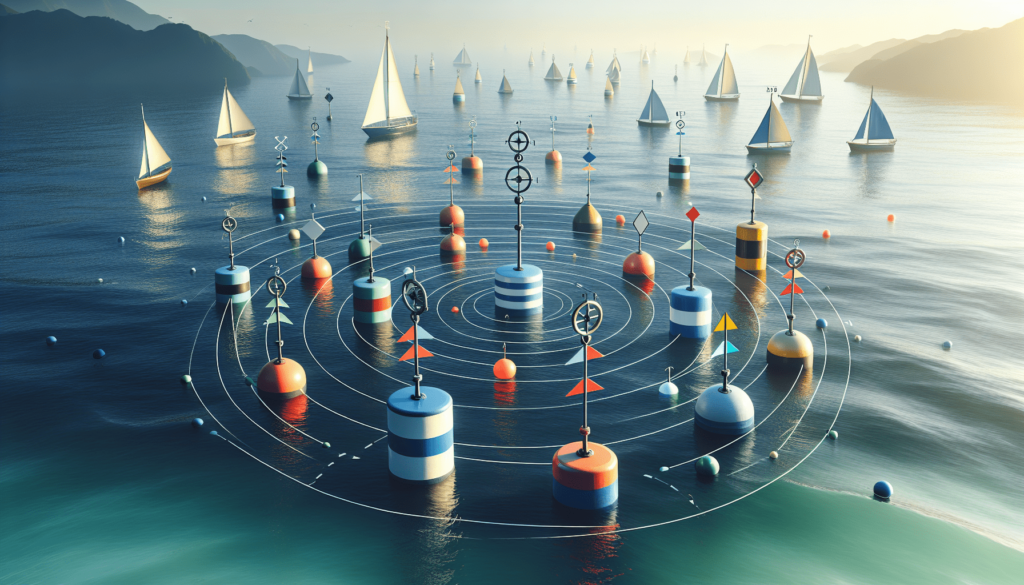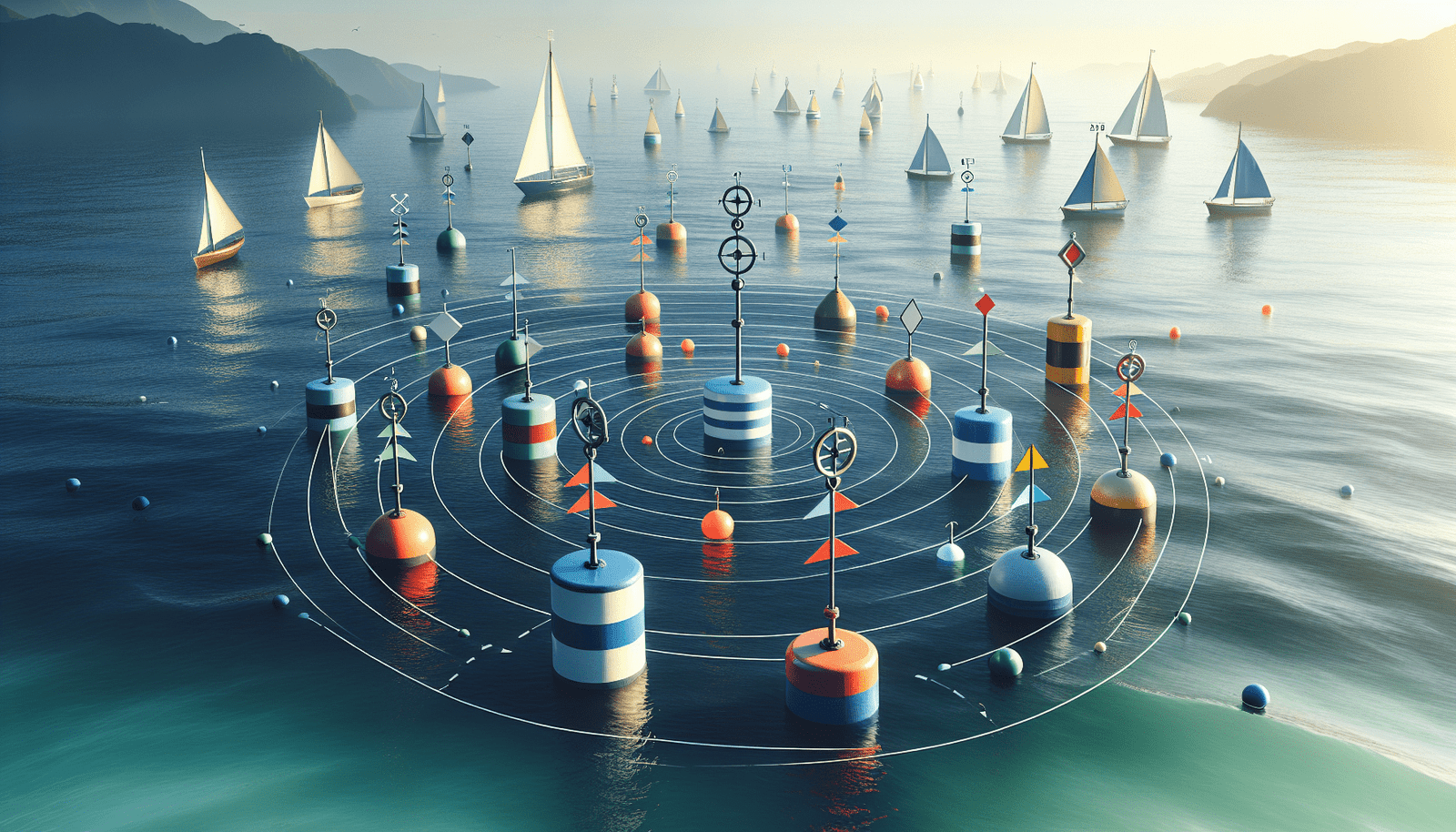Imagine adorning the captain’s hat, your compass is your guide and the sea is your world. As you embark on this aquanautical journey, it’s essential to arm yourself with basic navigation tools. Among them, the buoyage system stands as your silent, reliable, sea partner. The “Beginner’s Guide to understanding buoyage systems” tears down the complex walls surrounding these sea markers and charts a course that even novices can steer. Let this guide enlighten you on buoyage systems’ importance, their varying forms and color codes, and how they whisper the secrets of safe and sound sea voyaging right into your ears.

What is a Buoyage System?
Definition of a buoyage system
Imagine yourself on a grand maritime expedition. As the seafarer at the helm, one of your most vital tools for navigation would undoubtedly be the buoyage system. So, what is a buoyage system? It is a network of buoys, also known as maritime signs, placed strategically in water bodies to guide the journey of vessels.
The role and significance of a buoyage system in maritime navigation
The buoyage system isn’t just a helpful guide; it’s like your loyal compass in the vast, open waters. The role it plays in maritime navigation is invaluable — leading the way, keeping you off dangerous water contours, and ensuring a safe passageway. Think of it as the traffic signals of the sea, illustrating a clear and distinct path for you to navigate.
Types of Buoyage Systems
Cardinal buoyage system
The Cardinal buoyage system can be your stalwart guard against treacherous waters. Stationed around perilous areas, these guardians take their names from the cardinal points — North, South, East, and West. Each has its distinct color scheme and top mark, telling you exactly where the danger lies in relation to the direction of compass north.
Lateral buoyage system
You could imagine the Lateral buoyage system as your road signs on the high seas. They show you the left and right (port and starboard) sides of the navigable channels. Ubiquitous and user-friendly, these lateral markers come adorned with rhythmic light patterns, guiding you through the darkest nights.
Inland Waters Obstruction Mark buoyage system
An additional reliable navigator in your maritime journey can be the Inland Waters Obstruction Mark buoyage system. Designed to alert mariners about submerged dangers and obstructions in inland waterways, these markers serve important roles in maintaining safety and preventing accidents.
Understanding the Cardinal Buoyage System
Characteristics, markers, and uses of cardinal buoyage system
The Cardinal buoyage system paints a vivid picture with its specific colors and shapes, each symbolizing a unique warning. With black and yellow bands and dual cone topmarks, it conveys navigational information based on the compass cardinal points.
North, South, East, and West cardinal marks
You can recognize the North cardinal mark by its two black cones pointing up, a signal to keep north of the hazard. Conversely, the South cardinal mark has two cones pointing down, showing you to navigate south of the danger. East and West cardinal marks, on the other hand, have one cone pointing up and one pointing down, indicating to keep east or west of the obstacle.
Understanding the Lateral Buoyage System
Definition and characterization of the lateral buoyage system
Lateral buoyage system can be your road markers on the sea, guiding you through the safest water routes. Characterized by their red and green colors that represent port (left) and starboard (right) respectively, lateral markers safely guide you along channels.
Port and starboard side markers
Port side markers, mainly red, indicate the left side of the channel when entering from seaward. In contrast, starboard markers, painted in green, show the channel’s right side. Remembering the adage “red, right, return” can help you navigate in the correct direction.
Application and interpretation of lateral system
The lateral buoyage system is universal in its application and interpretation. Learning to decipher these colorful markers can make the difference between a smooth sailing and a shipwreck, as they unravel the secrets of the channel’s direction and route.

Understanding Inland Waters Obstruction Mark Buoyage System
Definition and Uses
While navigating inland waters, you’ll likely encounter the Inland Waters Obstruction Mark buoyage system. As its name implies, these markers are used to indicate obstructions, such as submerged rocks or logs, in inland waters that you need to steer clear of for unimpeded and safe voyage.
Types of Markers and their signs
The markers in this system have their own language, encoded in colors, shapes and symbols that deliver clear messages. They can indicate everything from general directions to specific warnings, such as the presence of shallow waters and dangerous bends.
The International Association of Marine Aids to Navigation and Lighthouse Authorities (IALA) Systems
Understanding IALA system A and system B
In an effort towards standardizing buoyage systems across the world, the International Association of Marine Aids to Navigation and Lighthouse Authorities (IALA) introduced two systems – IALA system A and system B. While both systems use the same cardinal buoys, their primary difference lies in their lateral buoys.
Countries that use IALA A and B systems
Broadly speaking, IALA system A is predominantly used in Europe, Africa, Asia (except for Philippines, Japan, and Korea), and Australasia. On the other hand, IALA system B is used in the Americas, Japan, Korea, and the Philippines.
Lights and Shapes in Buoyage Systems
Significance of lights in buoyage systems
Lights on buoys are like sea beacons that illuminate your path. Promoting visibility and clarity, they are essential in the buoyage system. They serve different purposes, from marking the way in dark conditions to indicating certain navigational instructions.
Different light colors and their meanings
The use of different light colors adds another layer of complexity to the system. Red, green, white, or yellow lights each carry a unique message. While red and green correspondence with port and starboard in lateral buoys, a cardinal buoy might use white or yellow lights.
Understanding shapes in the buoyage system
In addition to color and light, shapes are a crucial aspect of the buoyage system. Cones, crosses, spheres, and pillars each come with their unique meanings attached.
Types of lights: flashing, isophase, occulting, long flash, morse code
The types of lights on a buoy, whether flashing, isophase, occulting or Morse code, also relay unique messages. Flashing lights are used for a variety of reasons, including to draw attention to imminent danger. Morse code lights, on the other hand, can spell out exceptionally clear instructions.
Sound Signals in Fog
Understanding the use of sound signals
Navigating waters can often get obscure and foggy, quite literally! Sound signals play a vital role in these scenarios. They are used to alert mariners of the presence of navigational hazards, marking their position, and indicating their type under low visibility conditions.
Types of sound signals and their meanings
Sound signals can vary from haunting foghorn blows to rhythmic gongs and bells. These different sounds carry unique meaning and can warn of danger ahead, guide towards safety, or provide vital information on the water’s depth.
Safety Considerations in Buoyage Systems
The significance of maintaining and monitoring buoyage systems
As important as understanding buoyage systems is ensuring their maintenance. The safety considerations in traffic systems do not just end in following the rules; maintaining and monitoring buoyage systems is equally important. Deciphering markers and signs doesn’t do much good if the buoys aren’t functioning optimally or are positioned inaccurately.
Possible dangers of neglected or misunderstood buoyage systems
A neglected or misunderstood buoyage system could potentially lead to disastrous consequences. From ships going off course to maritime accidents, the risks are immense. For this reason, it is crucial to not only take care of these systems but to make sure you understand them to a tee.
Further Resources for Understanding Buoyage Systems
Recommended books and training courses
There’s an ocean of knowledge available to anyone looking to understand buoyage systems better. A multitude of books, training courses, and maritime studies delve deep into the subject. Investing your time in these resources is vital to ensure you’re well-prepared for your sea journey.
Useful websites and online platforms
In this digital age, websites and online learning platforms offer a wealth of information and interactive courses designed to help you learn the ropes of understanding buoyage systems. Engaging in these platforms can magnify your learning and add to your maritime navigation skillset.
Arm yourself with the understanding of buoyage systems, become conversant with the language of the seas, and you’d be ready to unfurl the sails! With this beginner’s guide, your journey toward the mastery of maritime navigation has begun. Here’s to smooth sailing ahead!

